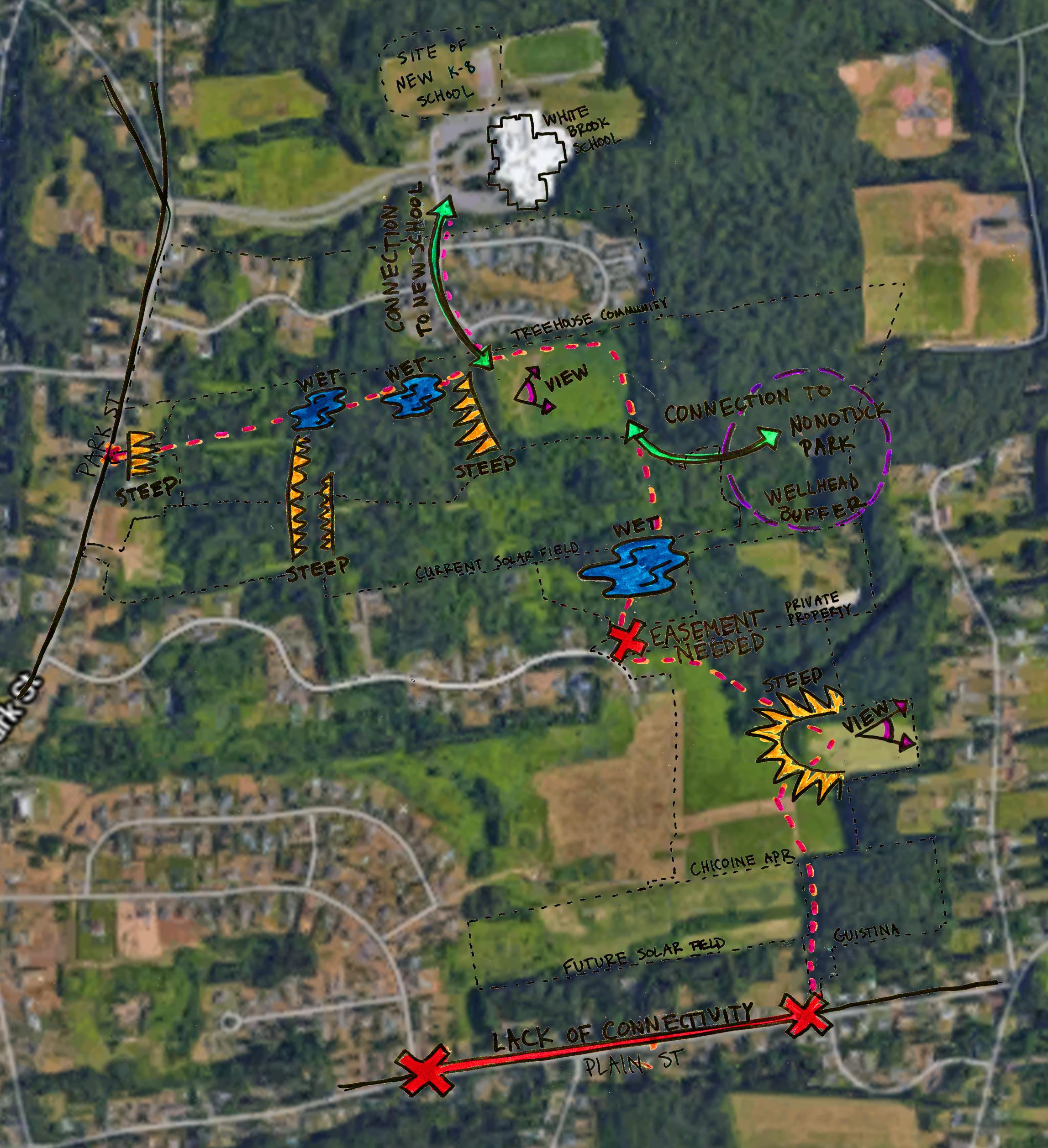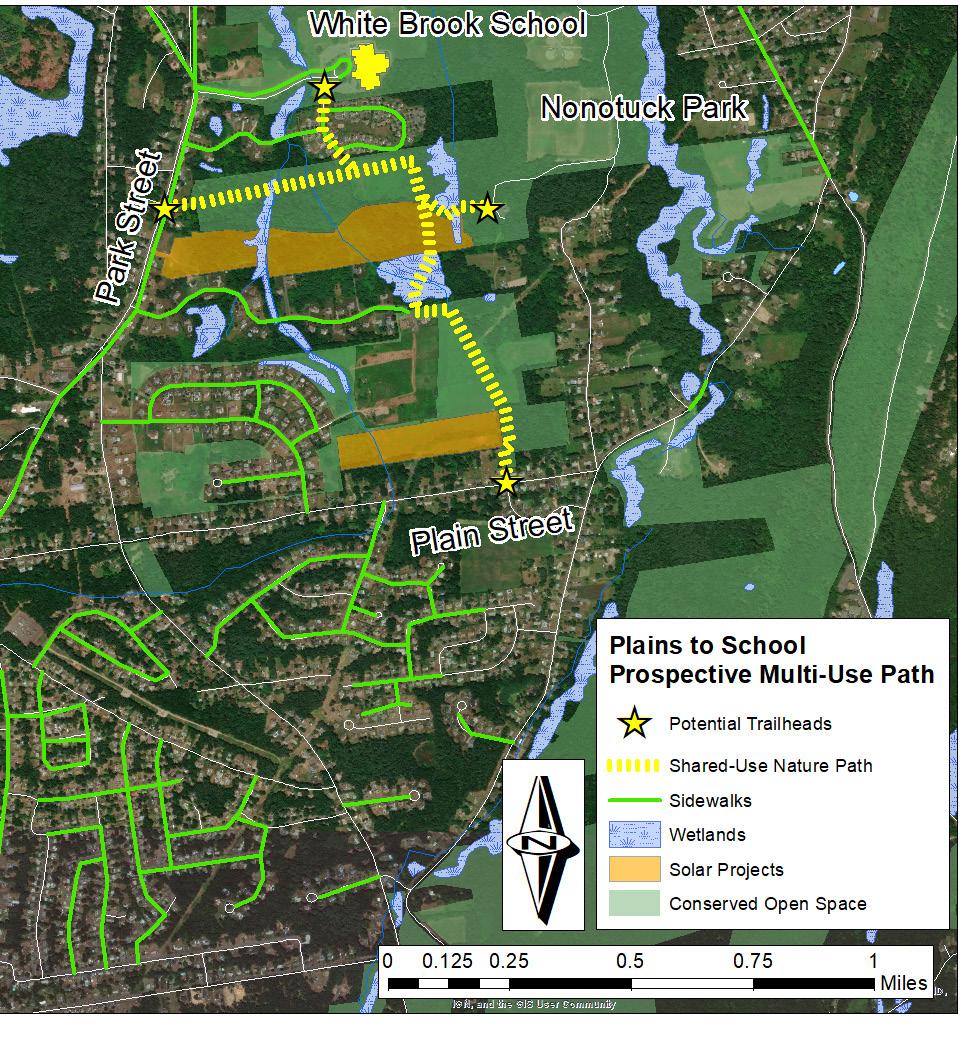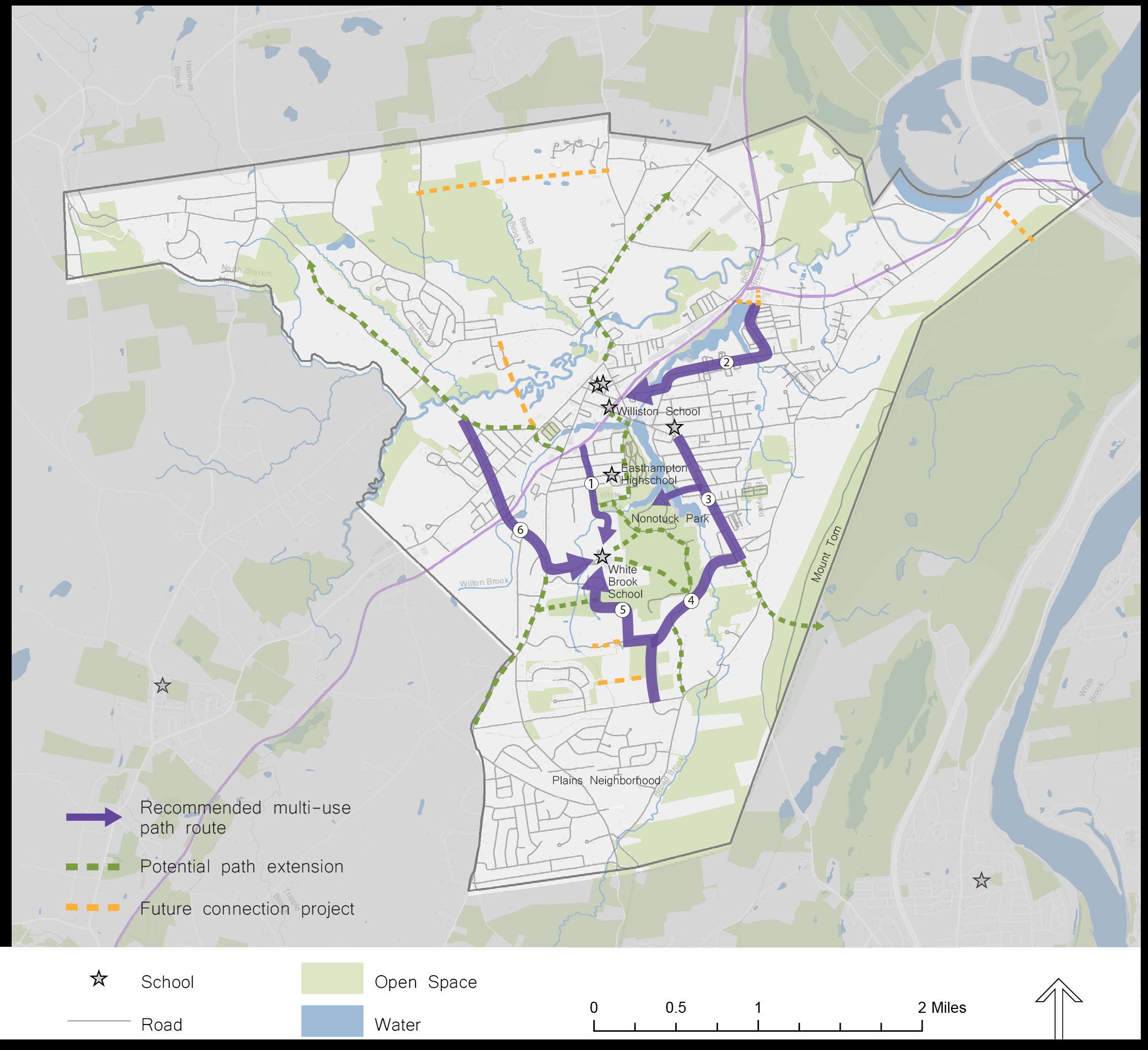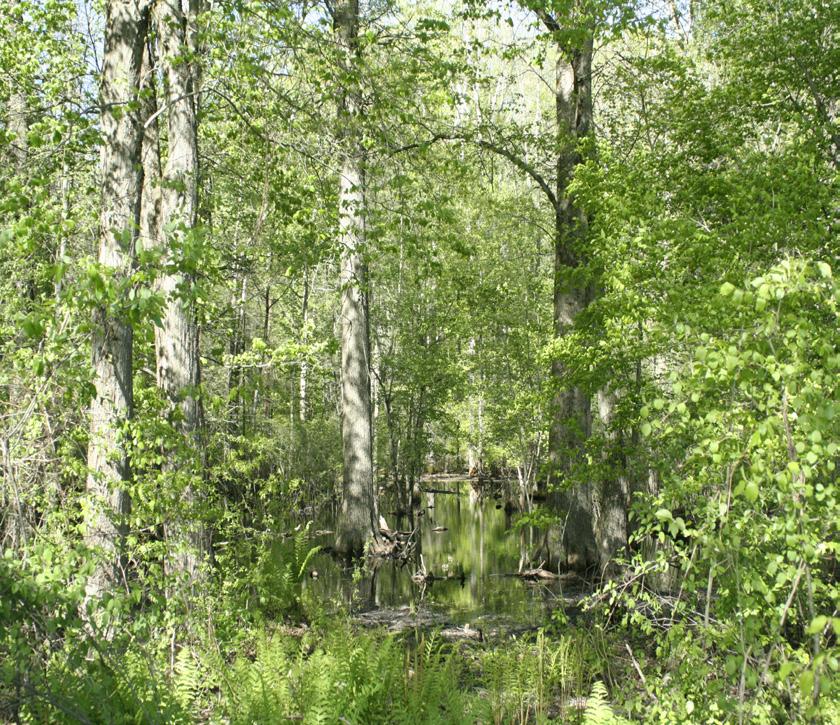Some of the challenges of this project include the issue of ensuring safe and usable connections to the trailheads from nearby neighborhoods, and traversing the at times difficult natural terrain, which includes steep slopes and wet areas. A further challenge will be designing a path that is both useful to humans and does not harm the wildlife and plant communities in the area. Bringing people, especially young people, into these natural areas in a way that teaches the value of these systems and how to care for them is likely to increase the sense of connection residents have with these systems and landscapes.
Climate Change One of the most important implications of this project could be its potential to mitigate climate change by providing access to the school, a park, and potentially downtown without the use of cars. In addition, given the presence of two solar fields along the proposed route, students could have the opportunity to learn about renewable energy. The potential impacts of climate change on the area are also important to consider. Changes predicted for the Connecticut River watershed include both increased frequency of heavy rain events and increased frequency of drought, which will alter hydrology and the resilience of plants. Summer temperatures are predicted to increase and the variability of spring frost dates and early warming trends will impact wildlife migration patterns and plant flowering times. All of these will put stress on plants and wildlife. The opportunity exists to create an ecosystem in the trail corridor that could create greater resilience in these areas and induce a greater sense of stewardship in trail-users. For example, one positive impact could be the increased ability to manage the existing invasive plants in areas where the trail will pass through.
12
Galen Hammitt | Walker Powell | The Conway School
Challenges
SUMMARY ANALYSIS
The possible path corridor passes through beautiful natural settings, provides access to diverse habitats and landscapes, which can be interpreted through educational elements, and presents the potential to connect an isolated neighborhood to recreational opportunities, including access to Nonotuck Park, and to create a route for students to commute to school without using fossil fuels.
Prepared for the City of Easthampton | Spring 2020
Assets
PLAINS TO SCHOOL: A Shared-Use Path for Easthampton
SUMMARY ANALYSIS






















